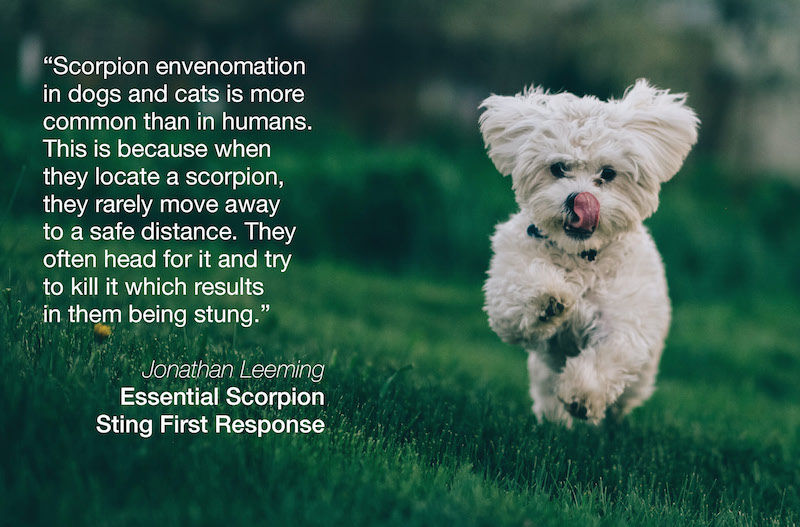Scorpion envenomation in dogs and cats is more common than in humans. This is because when they locate a scorpion, they rarely move away to a safe distance. They often head for it and try to kill it which results in them being stung. Although this section focuses upon domestic cats and dogs, the associated principles and factors influencing symptom severity, apply to all mammalian animals (humans, domestic and wild). It has to be noted that scorpion stings in wild animals is not well studied because of the difficultly in collecting reliable data.
The important differences that influence the outcome of a sting are the following:

Diagnosis is based upon signs of agitation and abnormal behaviour. It is only by interpreting the animal's behaviour that the severity of symptoms can be evaluated.
A major challenge in responding to a scorpion sting in cats and dogs is their inability to clearly communicate the level of symptoms that they are experiencing. As a consequence, class 1 and 2 symptoms often go unnoticed by the pet owner. Class 3 and 4 symptoms are often diagnosed late and require immediate response to save the animal’s life.

This content is the product of many hours of work based upon years of experience. If you found it useful or of value, then please consider a small donation to help me offer more content like this!
I'm on a mission to reduce the burden of spider bites and scorpion stings across Southern Africa!
Newsletter | Public Events | Books & Workbooks | Presentations | Activities |Professional Development | Shop
